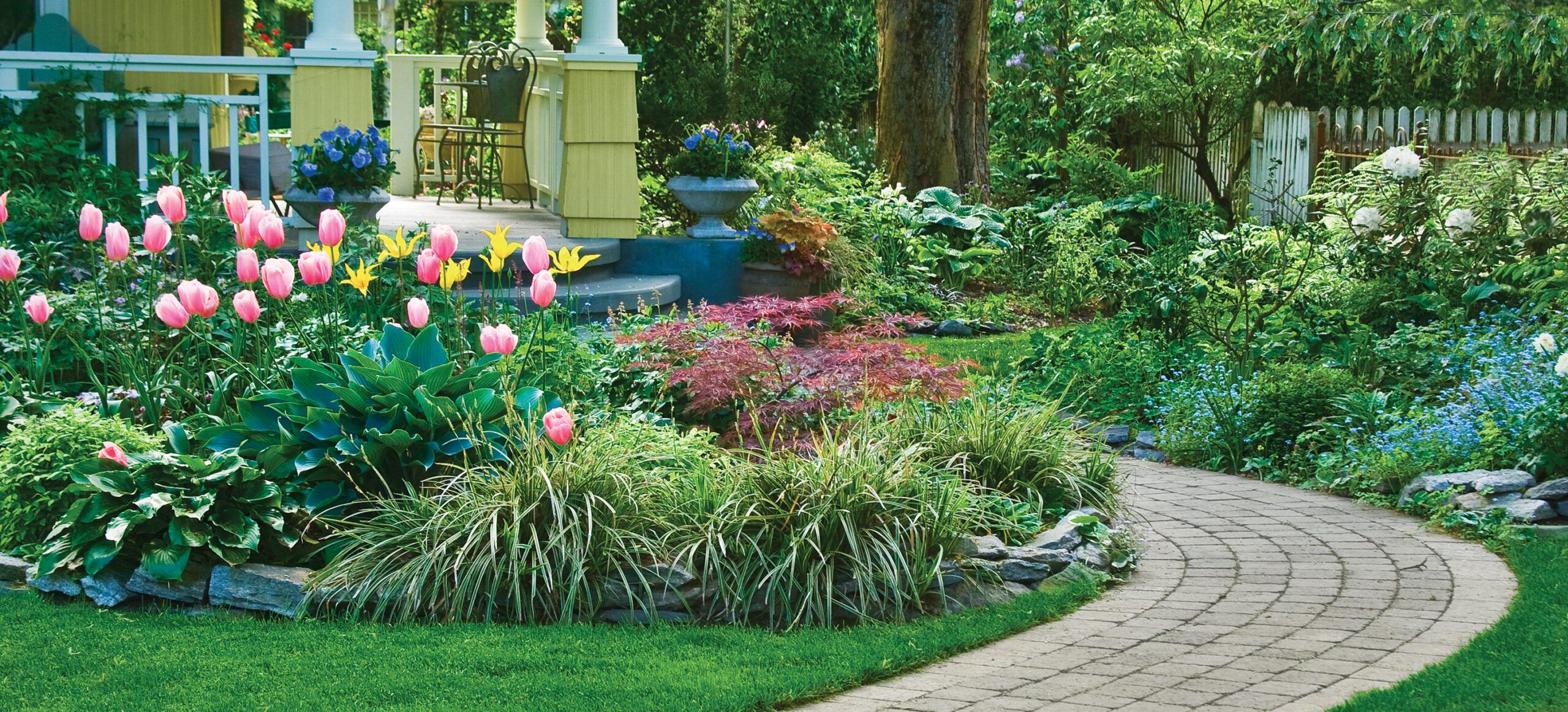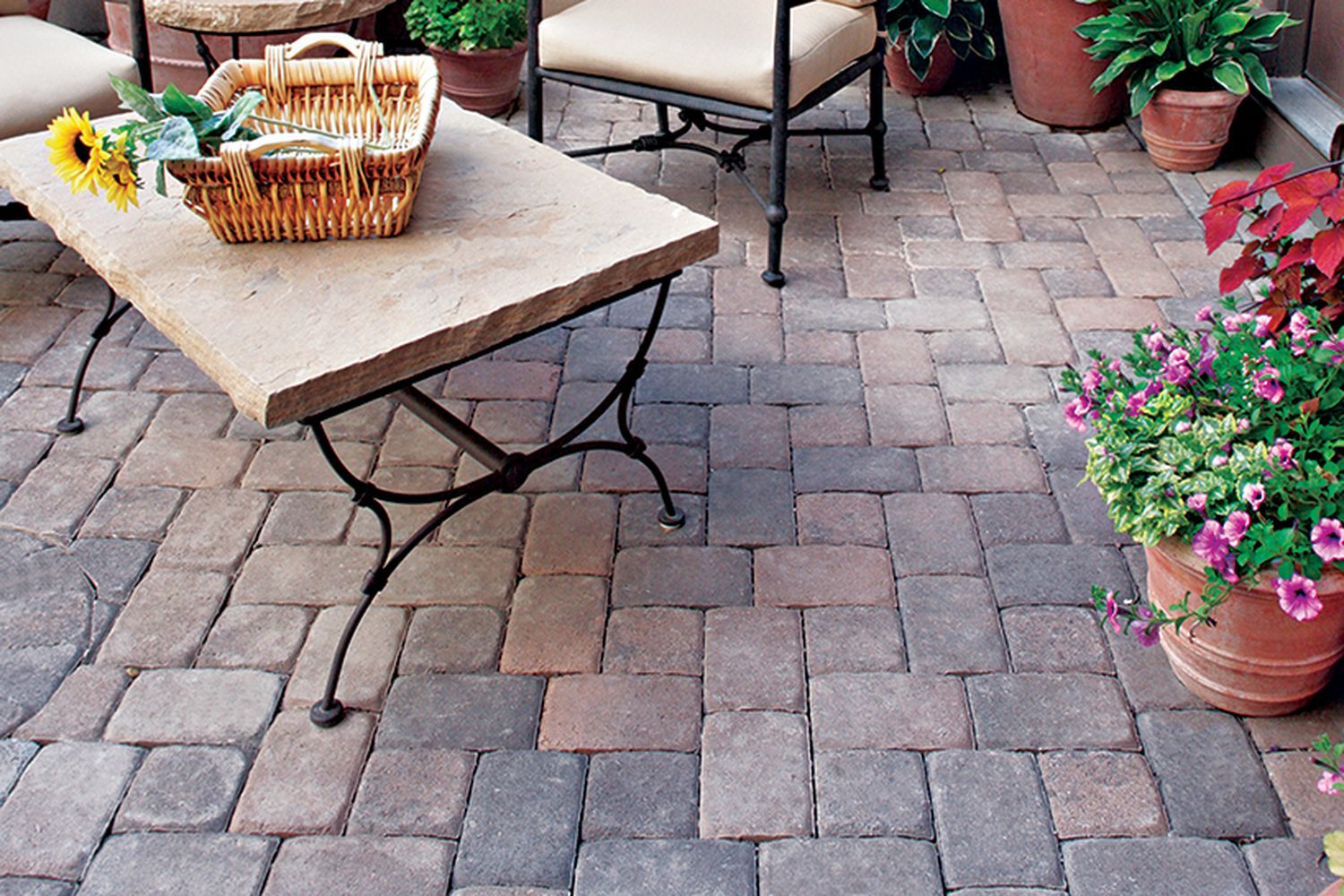Creating beautiful outdoor spaces doesn’t have to break the bank or require professional help. With some planning, effort, and creativity, you can transform your yard with do-it-yourself (DIY) pathways and patios. These projects can enhance your home’s curb appeal and provide functional areas for relaxing and entertaining. We’ll walk you through designing and building outdoor hardscaping features, from simple gravel paths to elaborate stone patios.
The Basics of Outdoor Hardscaping
Outdoor hardscaping refers to the nonliving elements in your landscape design, such as pathways, patios, and other structural features. These elements add structure, functionality, and visual interest to your outdoor spaces. When planning your DIY pathway or patio project, consider factors like drainage and durability and how the new features will integrate with your existing landscape. A well-designed hardscape can significantly enhance your property’s value and your enjoyment of outdoor living.
Tools and Materials for DIY Pathways and Patios
Before beginning your project, gather the necessary tools and materials for a professional-looking hardscape.
Must-Have Tools for the Job
You’ll need a variety of tools to complete your hardscaping project, including the following:
- Level for ensuring even surfaces
- Rubber mallet for setting pavers or stones
- Shovel and spade for excavation
- Tamper for compacting soil and base materials
- Wheelbarrow for transporting materials
Materials To Consider
The materials you choose for your project will depend on your design and budget. Also, consider factors such as durability and maintenance requirements and how well the materials will complement your home’s exterior. Here are some common materials:
- Edging materials to contain your pathway or patio
- Gravel or crushed stone for base layers and paths
- Pavers, bricks, or natural stones for surface materials
- Sand for leveling and filling joint
Planning Your DIY Pathway or Patio
Assessing your space and designing your layout will help you avoid costly mistakes and meet your needs and style preferences.
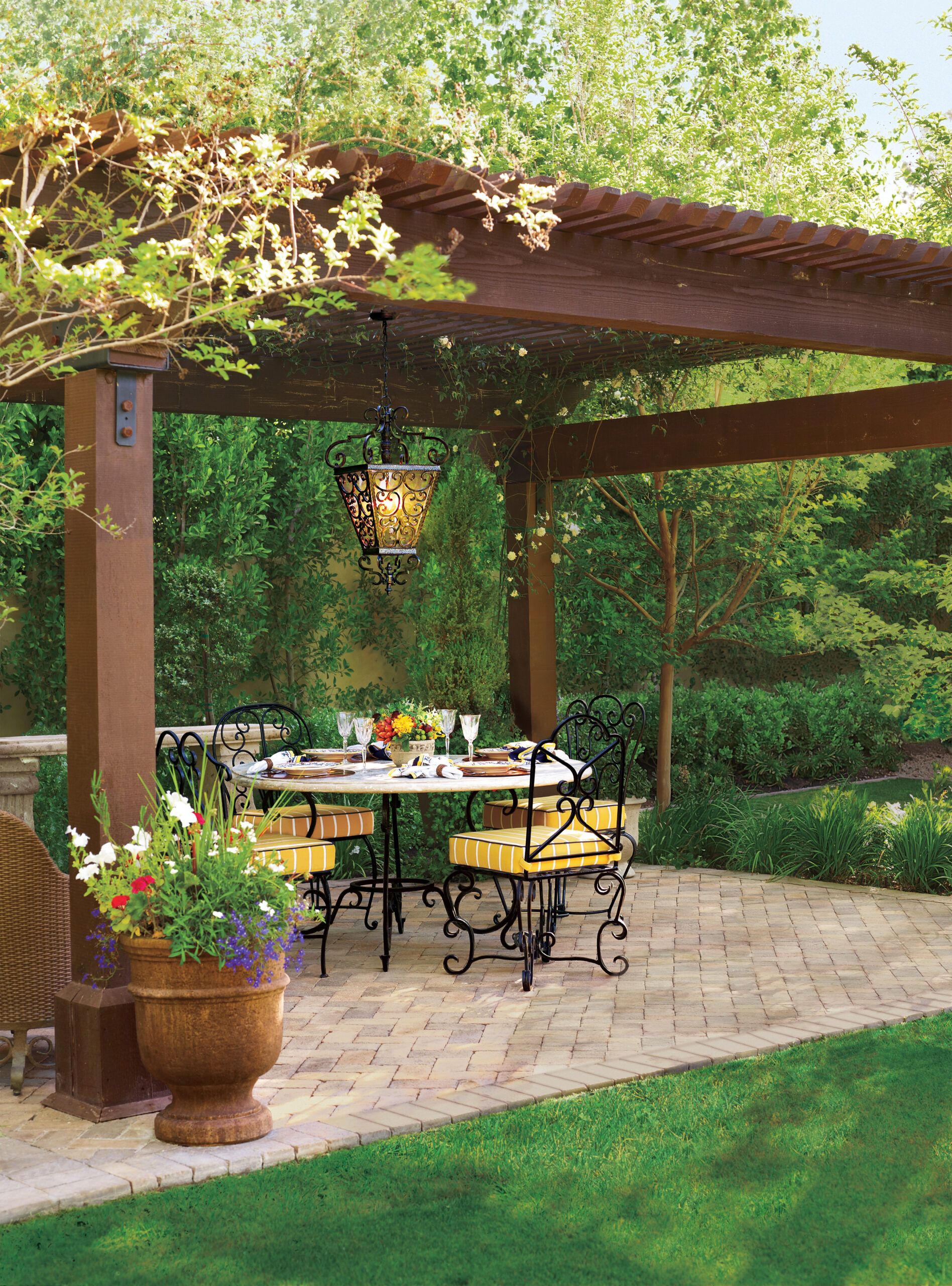
Assessing Your Space
Before you start digging or laying materials, evaluate your outdoor area. Take the following elements into account to create a design that looks great and flows with your overall landscape.
- Existing landscaping and how your new features will integrate
- Drainage patterns to prevent water pooling
- Sun exposure and shade areas
- Traffic patterns and how people will move through the space
Designing Your Layout
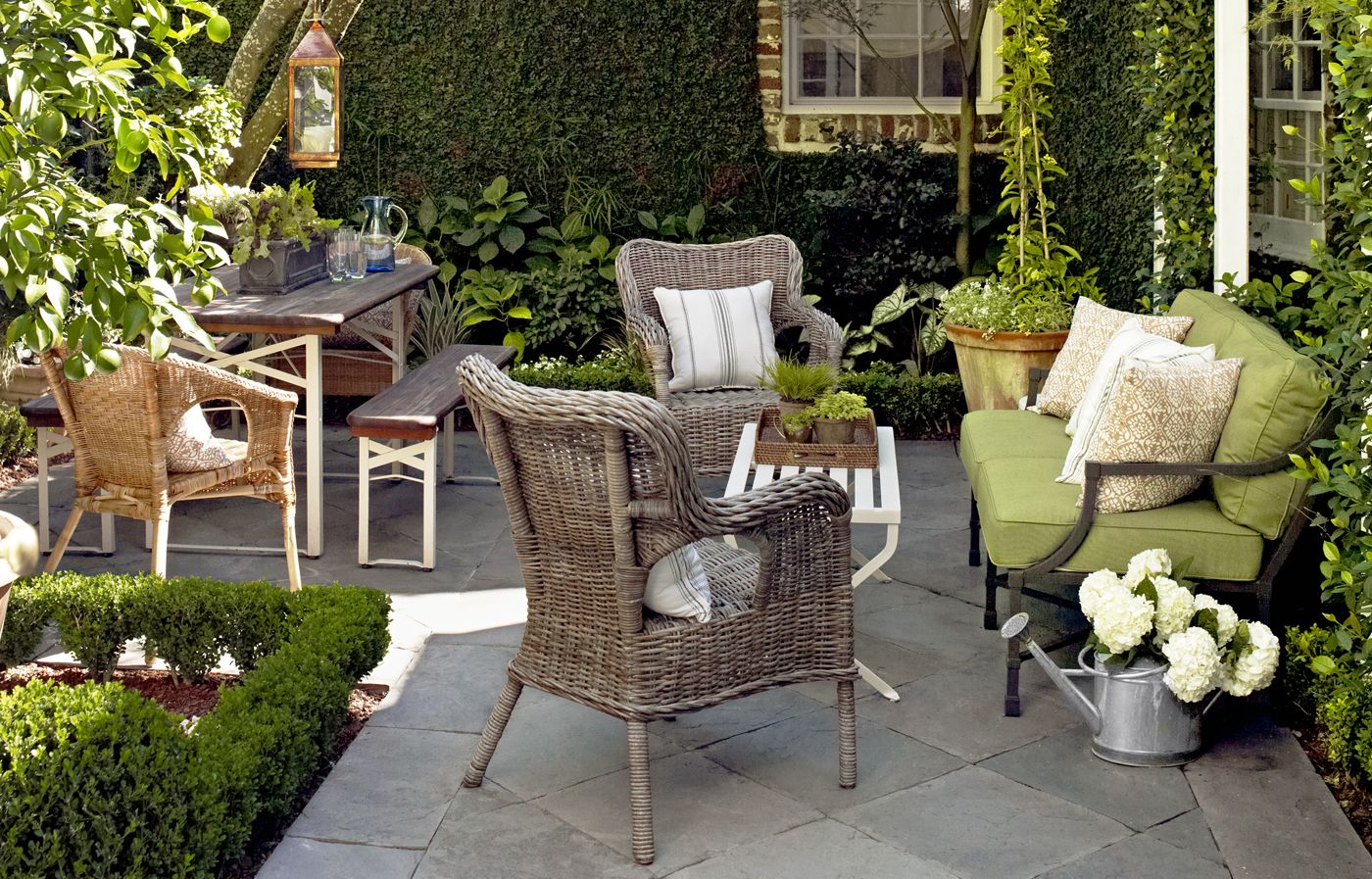
Once you’ve assessed your space, create a detailed plan for your pathway or patio. Consider using graph paper or a digital design tool to sketch out your ideas. Pay attention to the shape and size of your hardscaping features and how they connect to existing structures or other landscape elements. Also, note any focal points or special features you want to incorporate. Check local building codes and obtain any necessary permits before starting your project.
Budget-Friendly Pathway Ideas
Creating beautiful pathways doesn’t have to be expensive. Affordable pathway and patio materials can add charm and functionality to your outdoor space.
Gravel Paths
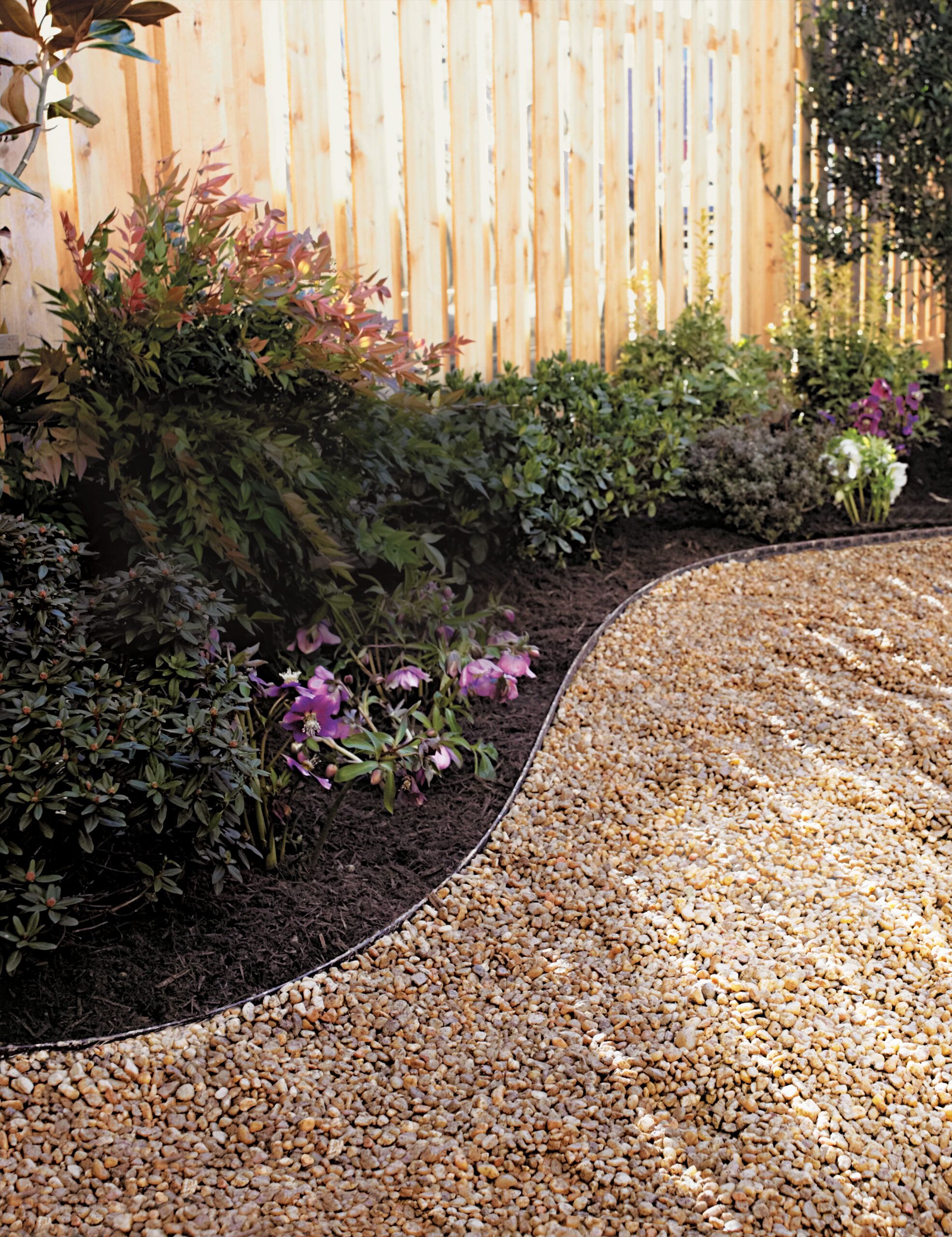
Gravel paths are one of the most affordable and easy-to-install options for DIY hardscaping. Gravel (as well as crushed brick and crushed shell) is classic and versatile and doesn’t require prior knowledge to install. These paths offer excellent drainage and can be customized to fit nearly any landscape design. To make a gravel path, take the following steps:
- Mark out your path’s shape.
- Excavate the area to a depth of about 4 inches.
- Add landscape fabric to prevent weed growth.
- Fill with a layer of gravel, tamping it down as you go.
Stepping Stone Walkways
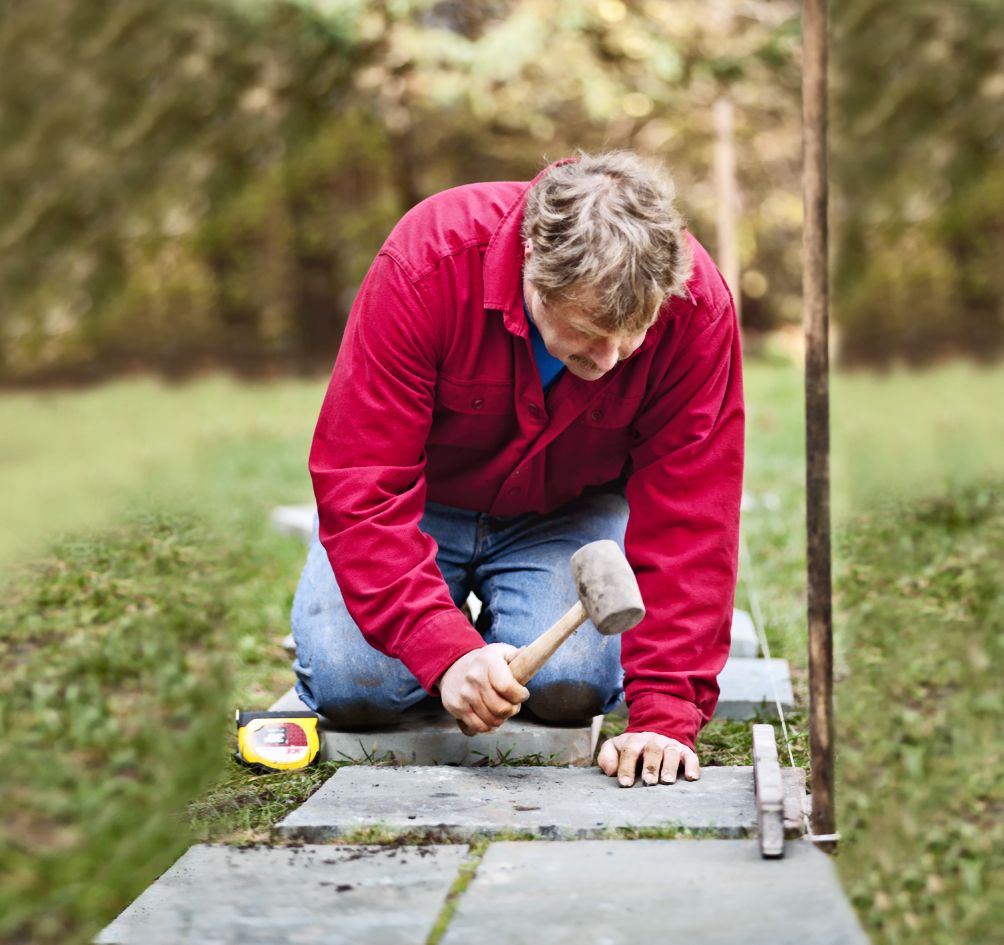
Stepping stone walkways provide a charming, natural look and can be installed quickly and affordably. This type of pathway allows grass to grow between the stones, helping them blend seamlessly with your lawn or garden. To create a stepping stone path, follow these steps:
- Choose your stones. These can be uniform or varied in shape and size.
- Lay out your design with appropriate spacing between stones.
- Excavate the area for each stone, creating a level base.
- Set the stones in place, using sand or gravel to stabilize them.
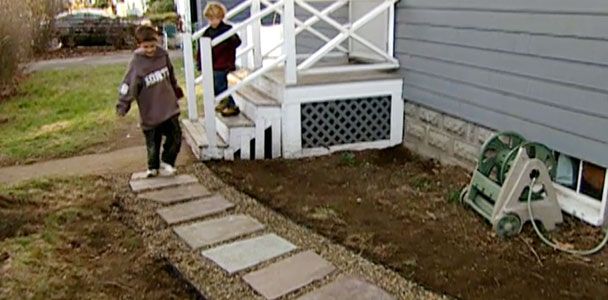
Creating a Stone Patio
A DIY stone patio can be a beautiful and long-lasting addition to your outdoor living space. While it requires more effort than gravel paths or stepping stones, the result can be stunning.
Preparing the Ground
Proper preparation is key to a stable and level patio. Follow these steps:
- Mark out your patio area.
- Excavate to a depth of about 6 inches, plus the thickness of your stones.
- Add a layer of landscape fabric to prevent weed growth.
- Spread and compact a layer of gravel for drainage.
- Add a layer of sand and level it carefully.
Laying the Stone
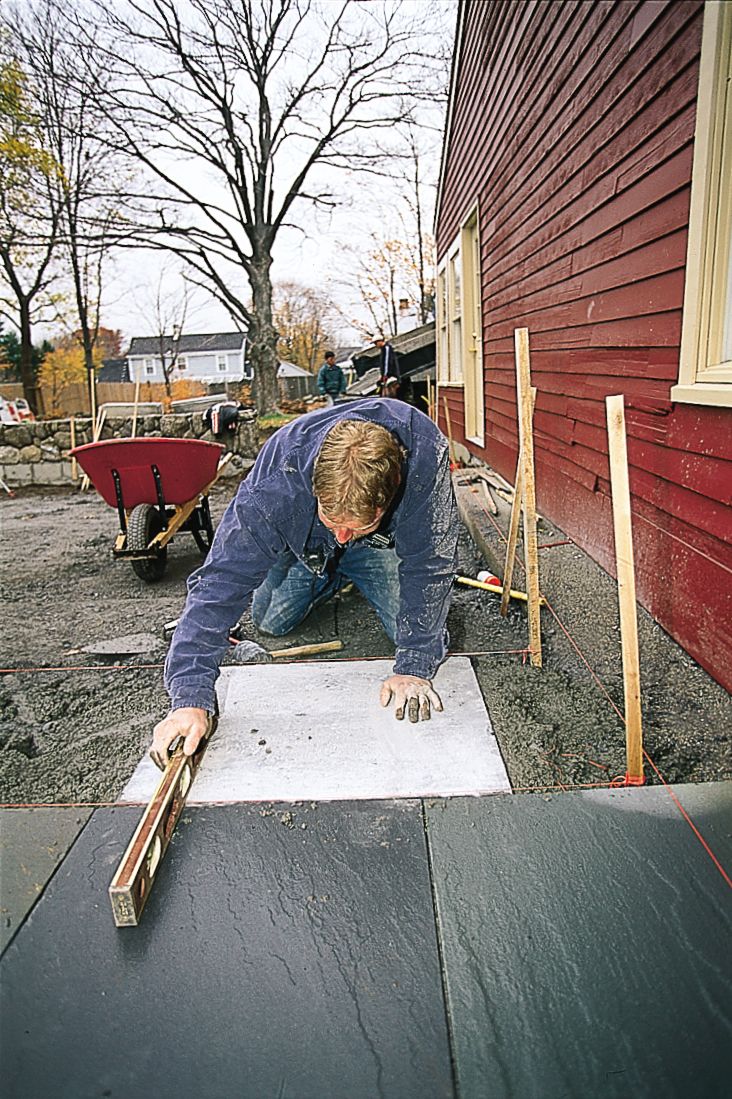
Once your base is prepared, you can begin laying your stones by taking the following steps:
- Start at one corner and work your way out.
- Use a rubber mallet to set each stone firmly in place.
- Check that the stones are level as you go, adjusting with sand as needed.
- Fill gaps between stones with sand or gravel.
A long-lasting patio is a lot like a smooth paint job—it’s all about the prep work. Taking your time with the preparation and installation will result in a beautiful, durable patio.
Brick Pathways and Patios
Brick is a timeless material that can add classic beauty to your outdoor spaces. Whether you’re creating a pathway or a patio, brick offers durability and versatility in design.
Choosing the Right Brick Pattern
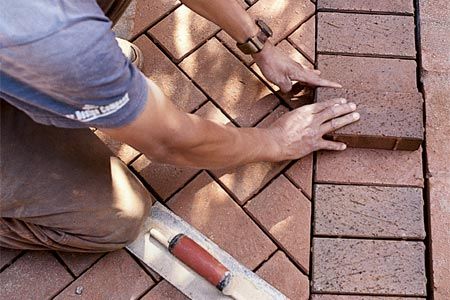
The pattern you choose for your brick installation significantly impacts the overall look of your project. Choosing the right pattern to suit the shape of your walkway (and your skill level) can drastically reduce your work time. Here are some popular options:
- Basketweave: A pattern of alternating pairs of vertical and horizontal bricks
- Herringbone: A complex pattern that creates a dynamic, zigzag effect
- Running bond: A simple, classic pattern where bricks are laid in offset rows
Installation Techniques for Brick Surfaces
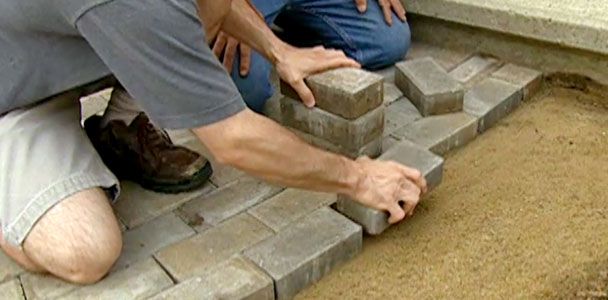
Installing a brick pathway or patio is similar to stone installation. Take the following steps during your brick installation:
- Prepare the path’s base with gravel and sand.
- Start laying bricks at one corner, following your chosen pattern.
- Use a level and string lines to maintain straight rows.
- Fill gaps with sand and compact the surface.
For a more permanent installation, consider using mortar between the bricks. However, this is more hands-on and less forgiving of mistakes.
Innovative Paver Designs for Pathways and Patios
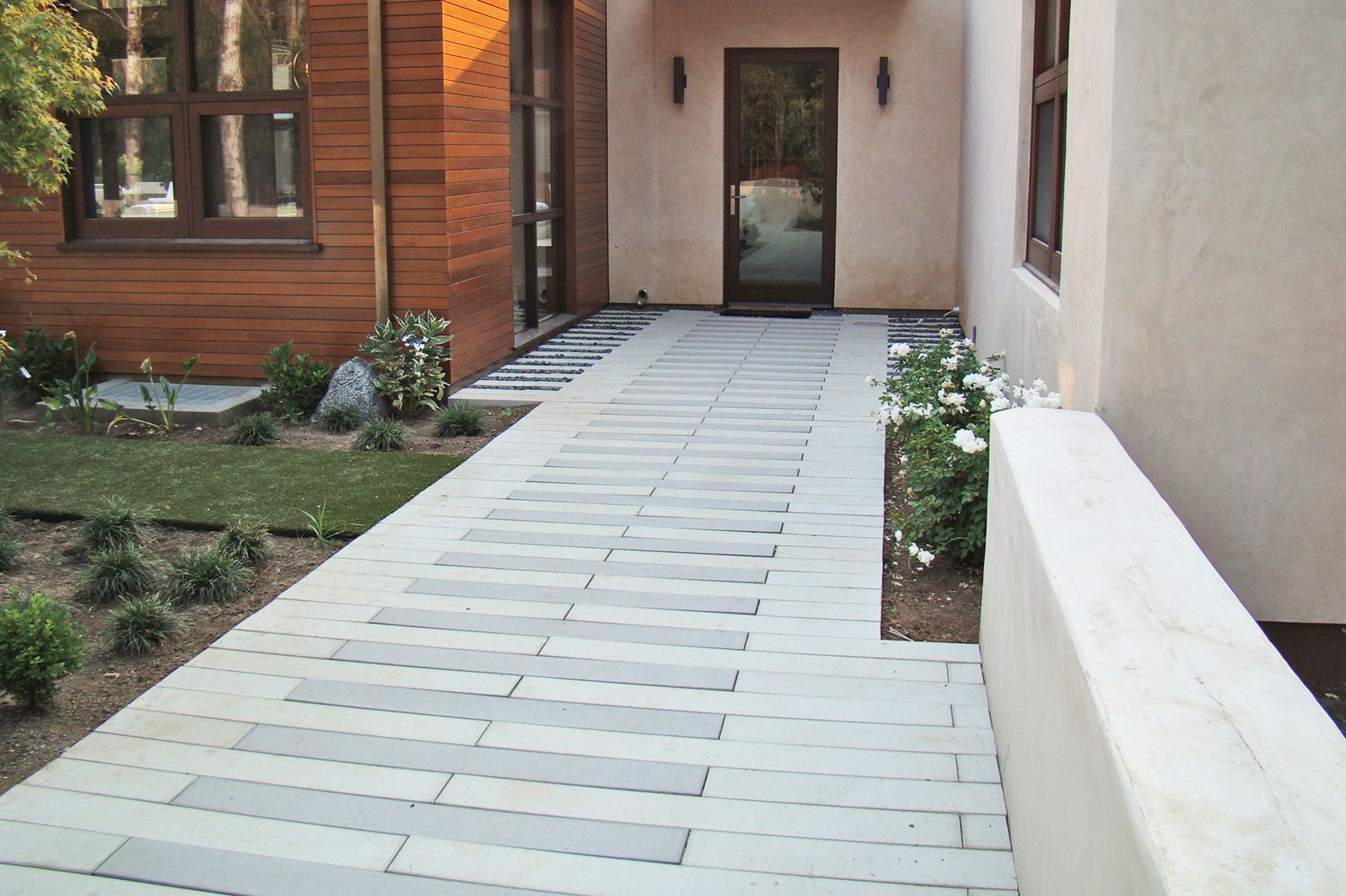
Concrete pavers offer a wide range of design possibilities for contemporary outdoor spaces. These versatile pavers come in various styles, shapes, sizes, and colors, allowing you to create unique patterns and layouts. Pavers are also available in several faux finishes, such as stone and brick.
When designing with pavers, consider mixing different sizes or colors to create visual interest. You might use larger pavers for the main area of a patio and smaller ones for borders or accents. Some modern designs incorporate LED lights into the paver layout for a stunning nighttime effect.
Permeable pavers are an excellent option for eco-conscious homeowners. These pavers allow water to drain through the gaps between them and into a bed of crushed stone, reducing runoff and helping prevent flooding.
Adding Flair to your Pathways and Patios With Decorative Elements
Incorporating decorative elements into your pathways and patios can elevate their visual appeal and make your outdoor space unique. Here are a few ways you can add flair to your hardscape.
Mosaic Designs
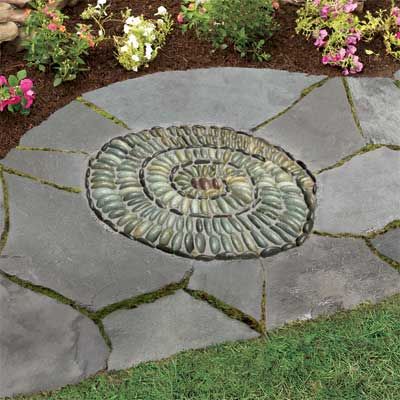
Mosaic designs can add an artistic touch to your hardscaping projects. Mosaics work well as accents in pathways or as decorative insets in larger patio areas. You can create a pebble mosaic for your yard or garden using various stone colors and sizes. Plan your mosaic design on paper first. Here are a few examples of pebble patterns to get you started. Then take the following steps:
- Use a form or template to guide your pattern.
- Set stones or tiles into a bed of mortar.
- Grout between the pieces for a finished look.
Lighting Features
Outdoor lighting can enhance the beauty and functionality of your pathways and patios. Proper lighting not only adds visual interest but also improves visibility and extends the usability of your outdoor spaces into the evening hours. Consider incorporating the following light features in your project:
- Recessed LED lights in patio surfaces
- Solar-powered path lights along walkways
- Spotlights to highlight landscaping features
- String lights overhead for ambiance
Maintenance Tips for Long-Lasting Pathways and Patios
By staying on top of maintenance, you can preserve the beauty and functionality of your outdoor spaces. Here are some tips to keep your pathways and patios looking their best:
- Address any weed growth promptly.
- Refill joints with sand or gravel as needed.
- Regularly sweep or blow debris from surfaces.
- Seal natural stone surfaces every few years to prevent stains and weathering.
Troubleshooting Common Issues in DIY Hardscaping Projects
Even with careful planning and execution, you may encounter some challenges in your DIY pathway or patio project. Here are some common issues and our suggested solutions:
- Uneven surfaces: Use a level frequently during installation and adjust your base materials as needed.
- Shifting pavers: Check that your base is properly compacted, and consider using edging to contain your hardscaping elements.
- Poor drainage: Slope your patio or pathway slightly away from your home and use permeable materials or install drainage systems if necessary.
- Cracking in mortar or concrete: Use expansion joints in large areas and avoid installations during extreme temperatures.
It’s often easier to address issues during the installation process than to fix them later, so take your time and don’t hesitate to reassess your approach if something doesn’t seem right.
Enhancing Your Patio with Fire Pits and Built-In Features
Adding features like fire pits and built-in barbecue areas can transform your patio into an outdoor living room, perfect for entertaining and relaxation.
DIY Fire Pit
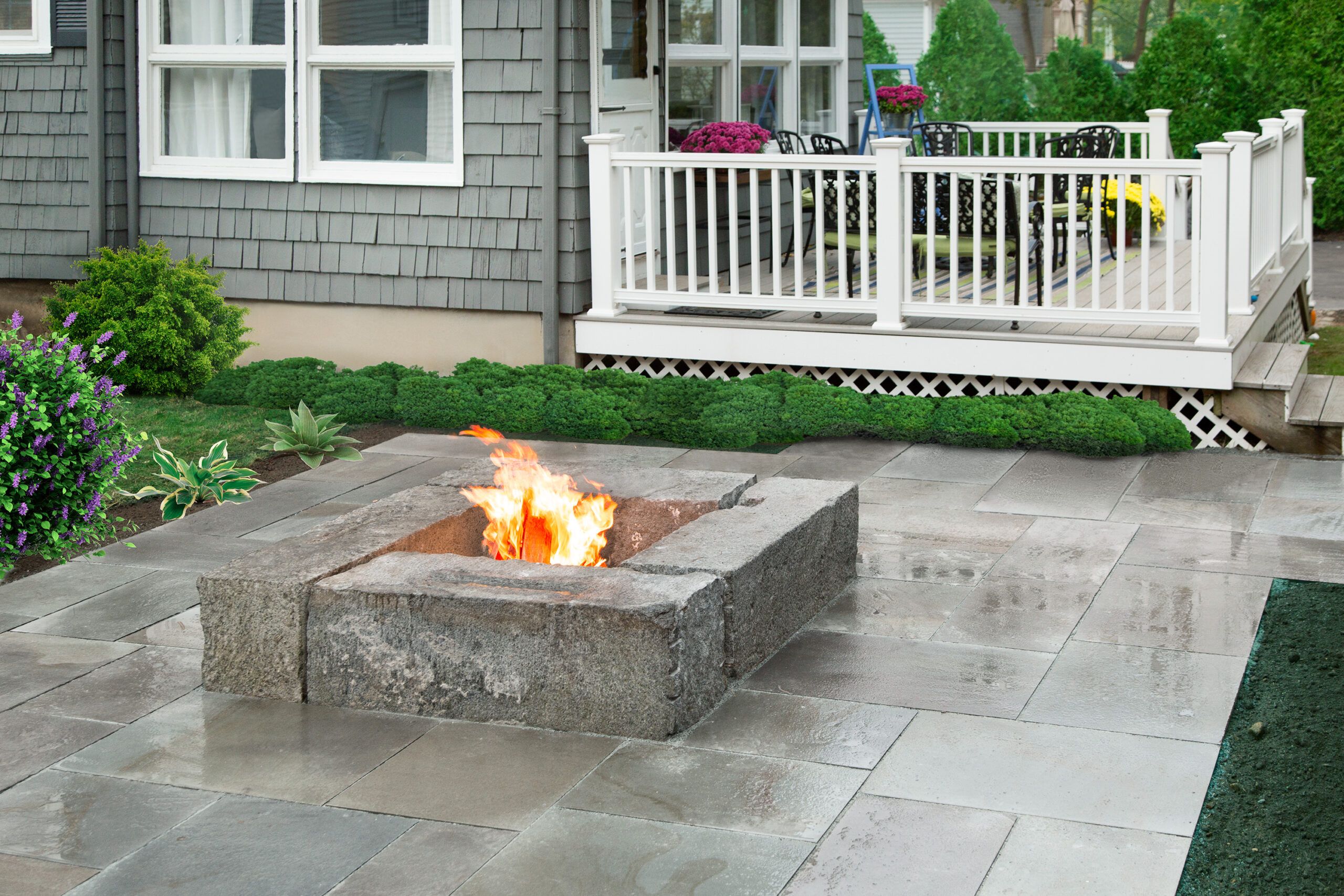
A fire pit can be a cozy focal point for your outdoor space. You can create a fire pit using large salvaged blocks of granite or other fire-resistant materials. Always check local regulations on fire pits before starting your project, and read up on fire pit safety. To build a simple fire pit, follow these steps:
- Choose a safe location away from structures and overhanging trees.
- Excavate the area and create a level base with gravel.
- Arrange fire-resistant stones or bricks in a circle.
- Consider adding a metal fire ring for extra safety.

Follow along with TOH landscaper Roger Cook as he builds a circular fire pit and surrounding patio.
Built-In Barbecue Area
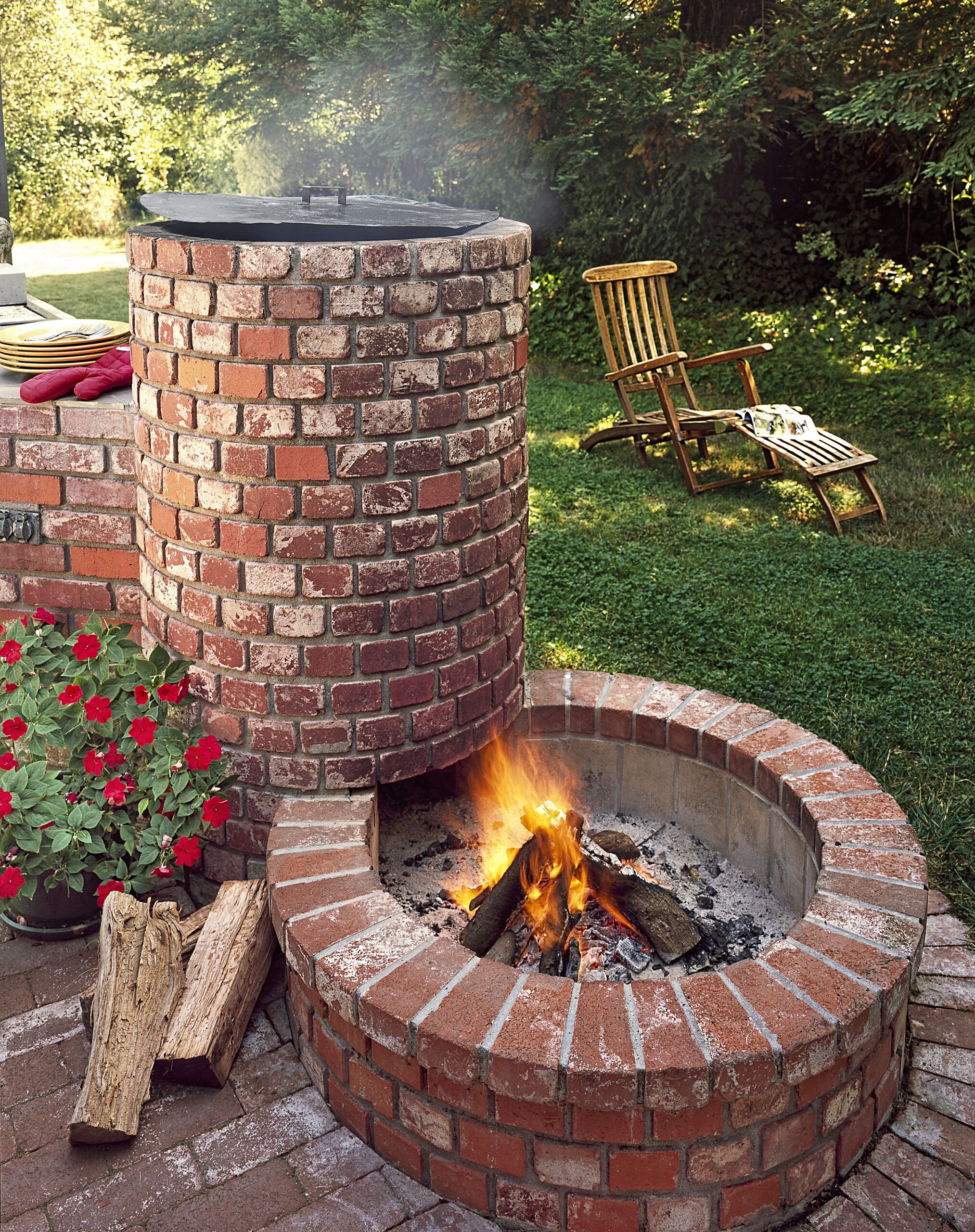
A built-in barbecue can elevate your indoor-outdoor living space by bringing your meals outside. Barbecue pits often offer more grilling space than your standard-sized rollaway grill, and they’re durable and weather-resistant. While constructing a barbecue area is typically more complex than DIY patio or pathway projects, it’s doable with a bit of patience and skill. Take the following steps:
- Plan your layout and obtain the necessary permits.
- Create a sturdy base, often with concrete.
- Build the structure with fire-resistant materials like brick or stone.
- Install your grill and any additional features like countertops or storage.
Eco-Friendly Options for DIY Pathways
Incorporating eco-friendly elements into your hardscaping projects can reduce your environmental impact and create a more sustainable outdoor living space.
Permeable Paving Solutions
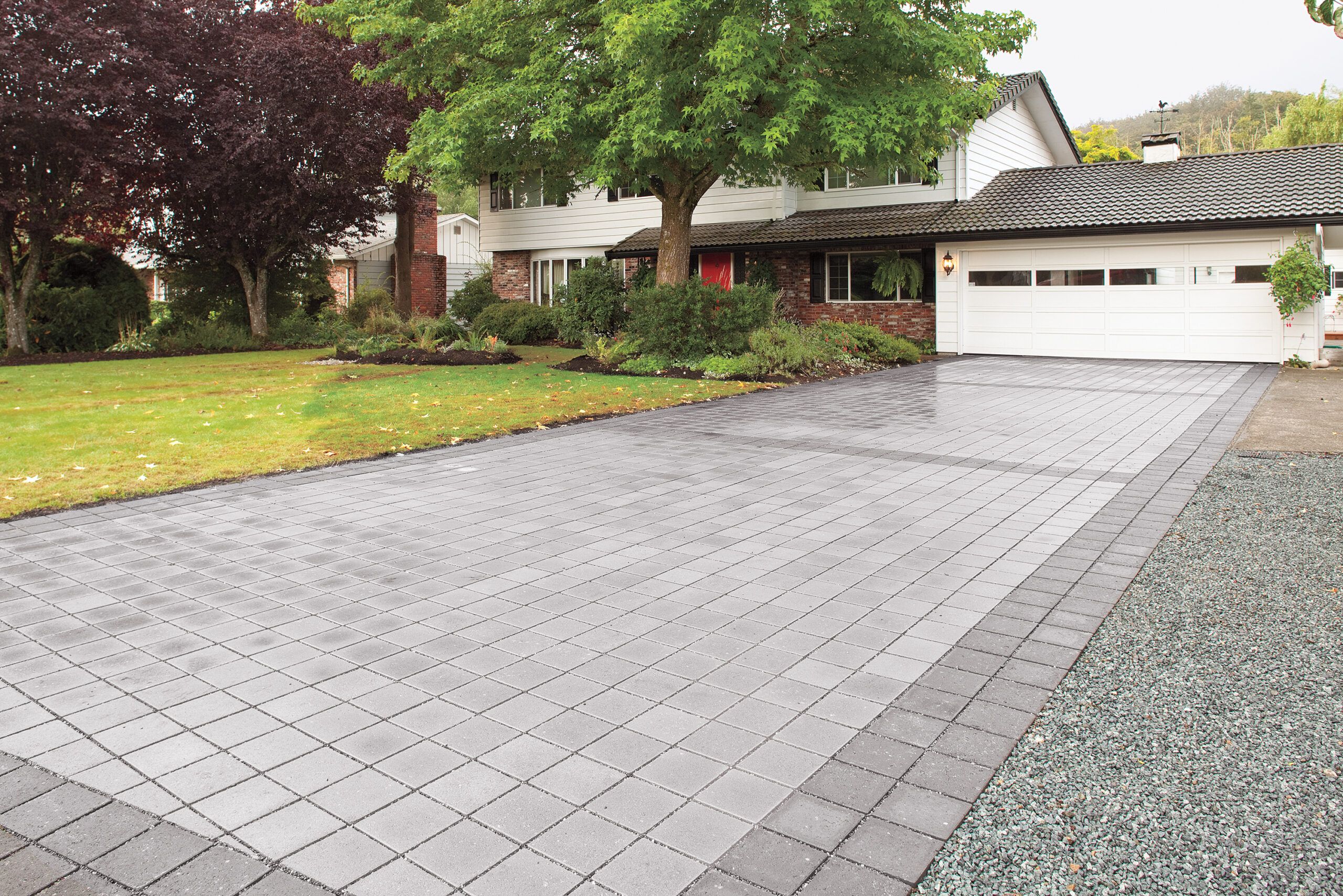
Permeable paving allows water to drain through the surface, reducing runoff and helping to recharge groundwater. These solutions are particularly beneficial in areas prone to flooding or water scarcity. Options include the following:
- Gravel or crushed stone paths
- Permeable pavers with gaps for water drainage
- Porous asphalt or concrete
Recycled Materials in Your Design
Incorporating recycled materials into your hardscaping can add unique character while reducing waste. Consider using the following materials:
- Reclaimed bricks or pavers from demolition sites
- Recycled glass as a decorative aggregate in concrete or mosaics
- Repurposed stone or concrete for retaining walls or edging
Our Conclusion
DIY pathways and patios offer an opportunity to enhance your outdoor living space while expressing your creativity. Whether you want a simple gravel path or an elaborate stone patio, there’s a project for every skill level and budget. Take your time with each step, from assessing your space and designing your layout to preparing the ground and installing your chosen materials. Seek advice from local hardware stores or online resources if you encounter challenges along the way. With patience and perseverance, you can transform your outdoor space into a personal oasis.
